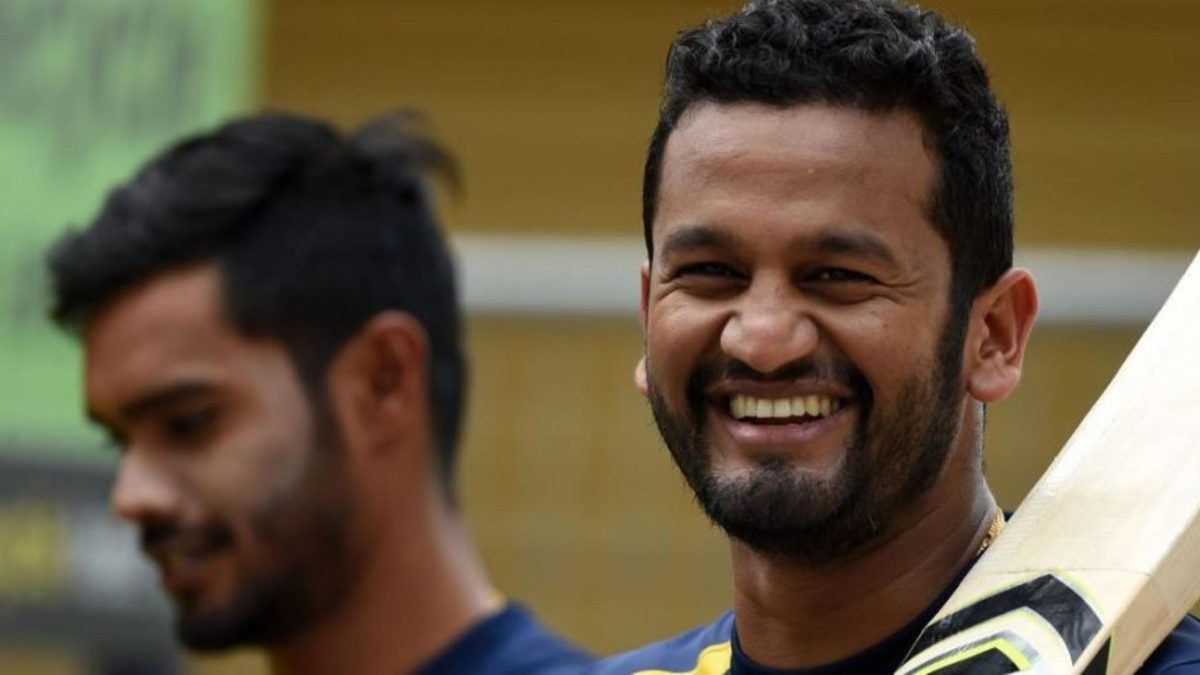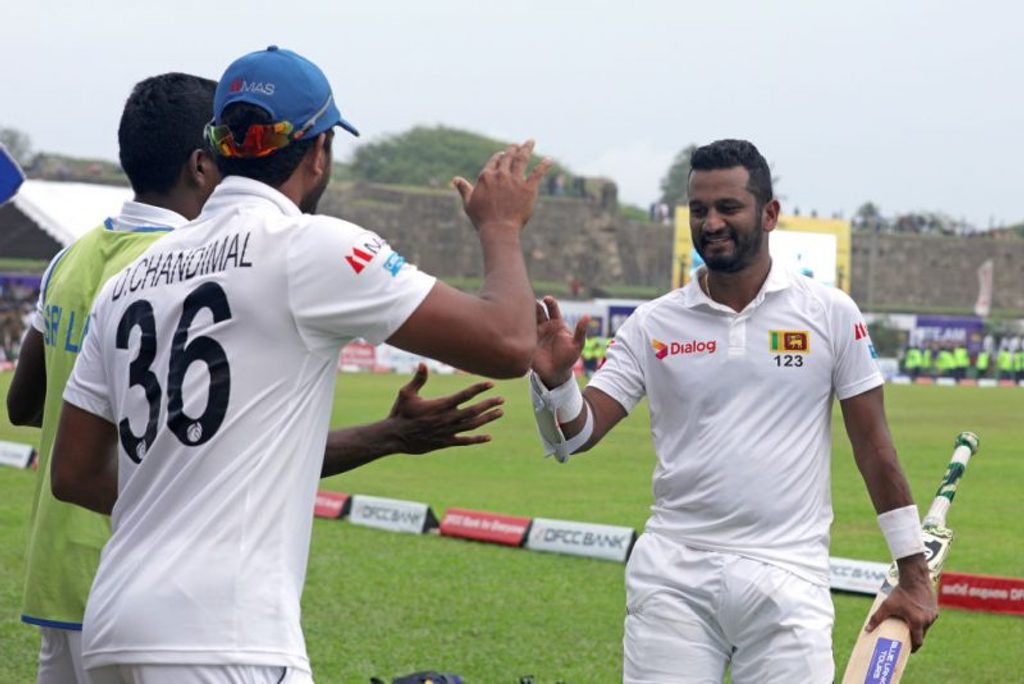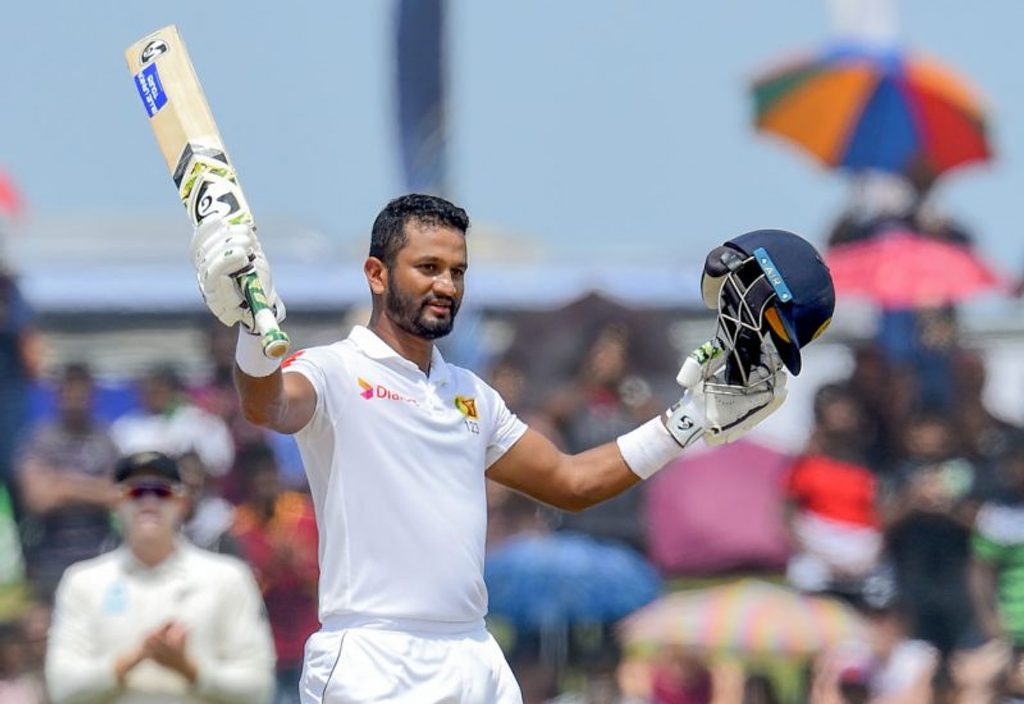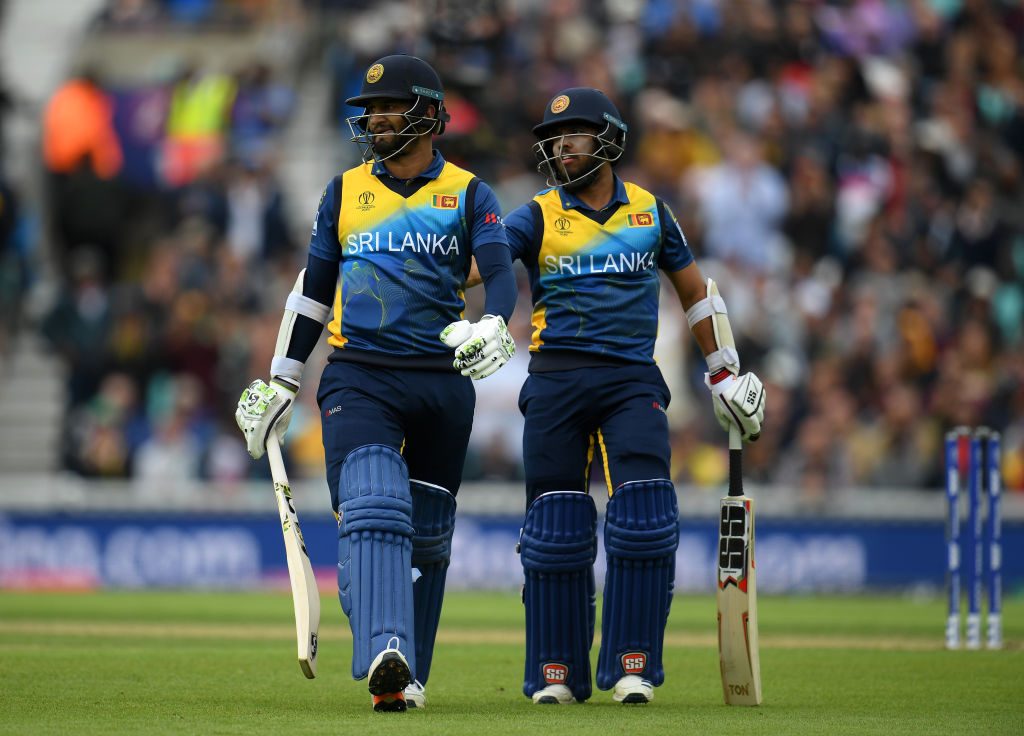
Since the retirement of their yesteryear stalwarts, Sri Lanka have yearned for an inspirational captain, and in Dimuth Karunaratne, they seem to have found one, writes Akshay Gopalakrishnan.
In February 2019, Dimuth Karunaratne’s career took a turn when he was named Sri Lanka’s captain for their tour of South Africa. At the time, there was no clarity on whether this was a long-term investment or a stopgap arrangement. Karunaratne had, after all, been handed the mantle only because Sri Lanka’s selectors had dumped regular captain Dinesh Chandimal from the squad. Nevertheless, it was a shot in the arm for a career that had been nothing out of the ordinary.
For years, Karunaratne had been Sri Lanka’s unheralded everyman, a symbol of toil, whose contributions were solid but not eye-popping. He rarely dazzled, but many of his Test runs had come in trying conditions. Before he was captain, in the 66 Tests that Sri Lanka had played since his debut until then, he had featured in 58 of them. But his average after those outings stood at 36.58. In many ways, Karunaratne’s career was a reflection of the thankless job of a top-order batsman in Test cricket.
But whether by design or coincidence, under Karunaratne, Sri Lanka have had somewhat of an upward trajectory. By extension, it has elevated his own game. The patterns emerged early enough: in his first assignment as skipper, Sri Lanka wiped out South Africa 2-0. Not only was it their maiden series win in the country, but it also marked the first time South Africa had been swept in a home bilateral series in 13 years.
[caption id=”attachment_119345″ align=”alignnone” width=”800″] Since taking over as captain, Karunaratne has averaged over 40 in Test cricket[/caption]
Since taking over as captain, Karunaratne has averaged over 40 in Test cricket[/caption]
Less than two months after that triumph, SLC dropped another bombshell when they announced that the 31-year-old would captain Sri Lanka at the World Cup in England and Wales.
That he even made the squad was startling; in 18 ODIs prior to the tournament, Karunaratne had averaged 20.53, and his strike-rate was a Mesozoic 73.35. Now, he was going to captain his country at the flagship event in a format he hadn’t played in four years.
[breakout id=”1″][/breakout]
Sri Lanka’s overall performance at the tournament was nothing to write home about, and yet, they produced one of the moments of the tournament by stunning eventual winners England. By restricting a world-beating England line-up in defence of a paltry 232, Sri Lanka not only threw open a dull round-robin, they also sent out a message that this was a team that cared for neither history nor reputation.
It’s a sentiment that has only been strengthened after the World Cup. In their first ODI assignment following the tournament, Sri Lanka swept Bangladesh 3-0 at home. Even if only against a weakened outfit, this was a feat not achieved by any team against this opposition in a bilateral series in Asia since 2014.
At the conclusion of that series, Karunaratne shed light on his vision for Sri Lanka’s one-day team. He had been given a World Cup squad that was replete with older stars who had for long been out of the reckoning, but he was a captain who wasn’t going to be allured by past success. At 31, Karunaratne has recognised that his priority is to infuse youth into the national team. By the time he winds up, he needs to have identified and carved the path for the next generation.
[breakout id=”0″][/breakout]
He proved that with his selections in the third ODI of that series against Bangladesh. He turned to his young brigade, and they responded spectacularly. All-rounders Dasun Shanaka, Shehan Jayasuriya and Wanindu Hasaranga, and fast bowler Kasun Rajitha, with a combined experience of 49 ODIs, came together to fire Sri Lanka to a 122-run win.
“If there’s a lot of competition and there’s a strong bench, if a player is injured, I can easily bring another player,” Karunaratne had said after that win. “This is the way we have to build a good line-up. This is the time we have to bring some youngsters for the next couple of years.
“You need a lot of players to build up that competition within a team, so that players are constantly putting pressure on each other to perform. If you have a strong bench, the players who are in the team have to take that responsibility. I have a team I can work with.”
[caption id=”attachment_119344″ align=”alignnone” width=”800″] Karunaratne scored a match-winning 122 in the first Test against New Zealand earlier this month[/caption]
Karunaratne scored a match-winning 122 in the first Test against New Zealand earlier this month[/caption]
In trying to inspire such performances, Karunaratne himself has set the template. Since taking over as captain, he has averaged over 40 – nearly five runs over his overall career average – in Test cricket. In ODIs, that difference is starker, as he averages nearly 24 runs more as captain than he did while not holding the captaincy.
Perhaps the most telling contribution came in the first match of their two-Test series against New Zealand. In the face of a daunting chase of 268, Karunaratne racked up a dogged 122 to script a historic six-wicket win. Not only was it a record chase at Galle – no other team had chased down a three-figure score at the venue – but Karunaratne also ended a year-long century drought, and scaled down the three-figure mark for the first time in the fourth innings of a Test.
“I had that hunger. I try to go for those big scores as much as I can,” he said after that knock. “When I get the opportunity, I really push for that … I made it happen. That’s a great source of confidence for me – to hit a hundred on a tough wicket like this.”
Sri Lanka have for long yearned for an inspirational captain – one whose game is uplifted by responsibility, rather than be pulled down by the weight of leading a team in transition. So far, Karunaratne has ticked those boxes.
[caption id=”attachment_119347″ align=”alignnone” width=”1024″] For Karunaratne, three wins in four Tests, and seven victories in 11 ODIs, is a good start[/caption]
For Karunaratne, three wins in four Tests, and seven victories in 11 ODIs, is a good start[/caption]
In him, Sri Lanka have a player who brings substance over style – a virtue whose importance cannot be overstated for a team in rebuild mode. Karunaratne is articulate as a leader, gritty and uncompromising as a player, and clear about the kind of players he wants to build a team with over the next four-year cycle.
[breakout id=”2″][/breakout]
He does not spit out clichés about not being bothered by personal records – he has openly stated in the past that he would like to end his career with 25 Test hundreds – and encourages his players to be bold and expressive, to be carefree without being careless.
It’s not as though he isn’t prone to indiscretions – he was lucky to walk away with a fine after being arrested for drink-driving before the World Cup – but it was a blip from a man widely regarded as a “brother” by his teammates.
These are still early days in his captaincy, and there is no telling whether he is the man to take Sri Lanka to the end of the tunnel that they have been in since the retirements of yesteryear’s stalwarts. But three wins in four Tests, and seven victories in 11 ODIs, is a start. And for a team that has been plagued by inconsistency and white-knuckled administration, any little hope is worth clinging on to.







